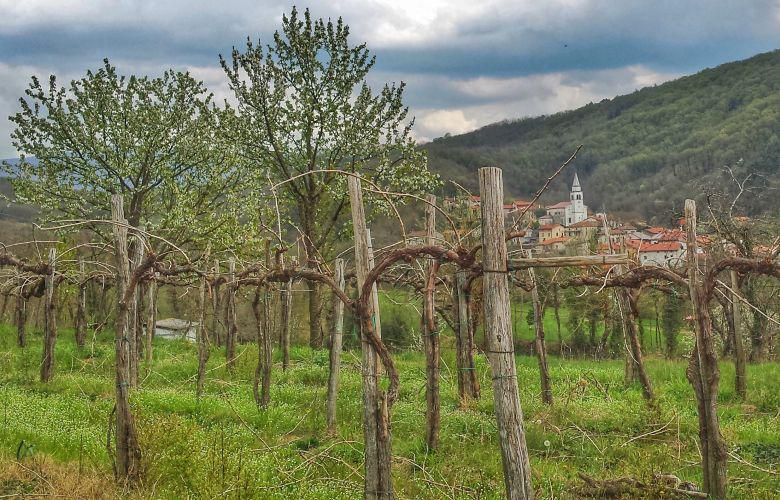
boutique, environmentally friendly destination, which is part of the Slovenian Tourist Board’s (STO) marketing plan, there are quite a few areas that remain untapped. Among them is wine and gastronomic tourism.
Slovenia is not exactly hiding its excellent wines and restaurants, but their promotion is largely left to individual players. This is evident by the attitude shown by the authorities. When Croatia unexpectedly got an online Michelin guide after a considerable lobbying effort – and its first-ever Michelin star --, Slovenia’s Ministry of the Economy issued a statement that “being included in the Michelin guide is not a responsibility of the state; it’s the responsibility of businesses” – i.e., individual restauranteurs.
Despite several joint projects with the STO, Ana Roš from the Hiša Franko restaurant has her own commitment and ambitions to thank for becoming one of the world’s best restaurants. This year, she has also won the “World’s Best Chef” title.
Wine is a similar story. The state is cautious when it comes to promoting restaurateurs – following the socialist doctrine of not drawing too much attention to any single restaurant – and tends to be reserved when it comes to promoting wine because it’s an alcoholic beverage. Despite ample evidence that gastronomic and wine tourists are among the best customers, both in terms of spending and having a sophisticated wine-drinking culture.
“Tourism is not just a way to make a quick profit”
Matjaž Zgonik and Vito Semič, both natives of the Vipava Valley, have been organizing wine tours of the valley for the past three years under the Winestronaut brand. They realize that their generation cannot expect to make a living from wine tourism. “If we waited for the relevant authorities, we’d still be at home and nothing would have happened. Things move very slowly in this field. However, we don’t concern ourselves with this situation too much. Instead, we try to enjoy what we do, and we bring our wine culture and tradition to our clients in an authentic way. We never made huge plans; perhaps our descendants will be able to make a living from wine tourism,” they tell us. “Tourism is not a way to make a quick profit. It’s a way of life.”
The concept of “wine astronauts” is simple --- to take tourists and Slovenian wine lovers on a tour of the “universe of wine.” They take them straight to wineries, to traditional “Osmicas,” to tourist farms, and to wine harvest ceremonies. The 10-member team is composed primarily of designers, photographers, and people from the creative professions. Their advertising campaigns avoid hard sells, and most of them are conducted through social networks. The company invests all its profits into its own development and projects run jointly by twenty wineries in the Vipava Valley. “The winemakers are an exceptionally committed group of people and try to bring their families, convictions, philosophies, and passion directly to the visitors,” says Zgonik.
Coordination is a persistent challenge
It's true that the Vipava Valley lags at least a decade behind the Goriška Brda region. A major reason lies in bureaucracy: The Brda region consists of a single municipality, while the Vipava Valley is made up of no fewer than six municipalities. “We have six different civic leaderships and six different perspectives. That makes it much harder to coordinate and unite the valley under a single tourist brand. Lately, there has been considerable progress as part of the ‘Vipava Valley. Uniquely different. All year round.’ campaign, but progress is slow because of the process of coordination between the different municipalities. We’ve focused on developing wine tourism in the Vipava Valley; our origins are here and we have plenty to discover and uncover,” Zgonik and Semič explain. “We are just a small piece in the mosaic of local tourist industry. We try to do the best job we can doing what we’re most familiar with. Sustainability is what we believe in. We want our heritage to be preserved and then passed on – not just from generation to generation but also around the world.”
Wine tourism undoubtedly provides many opportunities, particularly when it comes to individual varieties of wines, which have recently been highly sought after by wine connoisseurs. The Vipava Valley became aware of this early on, and in the 1980s, authorities there begin to bring almost extinct varieties, such as Zelen and Pinela, back to life. “Our advantage is that we are a fairly hidden valley. For foreign visitors, it’s important that they can sample a variety like Zelen, which exists nowhere else,” the “astronauts” explain. And Zelen certainly has a fascinating history. In Austro-Hungarian times, it was even sold to Vienna, and it made the village of Goče so wealthy that it could loan money to the Counts of Gorizia.
Examples of good practice
Goče is just a small part of the mosaic of Vipa Valley’s vinicultural possibilities. There are more and more examples of good marketing practices in the area – from the Taste of Vipava festivals to microbreweries including Reservoir Dogs from Nova Gorica and Pelicon from Ajdovščina. There’s also the Ajdovščina-based Faladur wine cellar, which unites almost all Vipava Valley wineries under one roof. Primož Lavrenčič and his Buria wines have thrilling international experts and enthusiasts of natural wines, while The New York Times has written about Jordan Cigoj’s charcuterie and orange wines. Meanwhile, culinary bloggers rave about Majerija, with its above-ground restaurant and below-ground boutique hotel, and Zemono, which is based in a Renaissance manor overlooking the valley. Undoubtedly, the attention will soon spread to the recently opened St. Daniel Hotel, whose unique selling point is serving only sustainably produced food. The Lepa Vida wine cellar has hit the nail on the head with its giant, 1.5-meter wine glasses that have become the cellar’s trademark.

































































